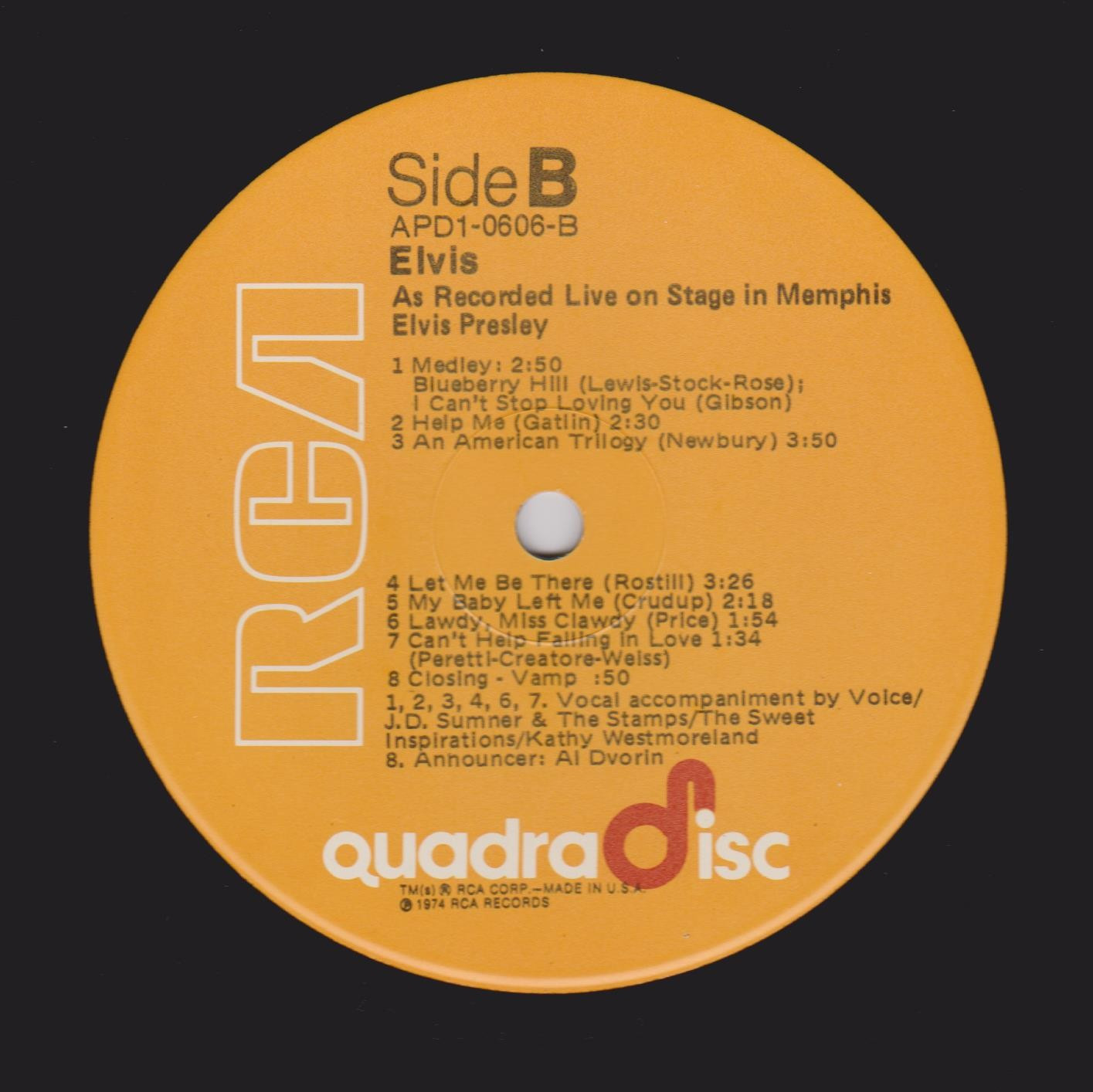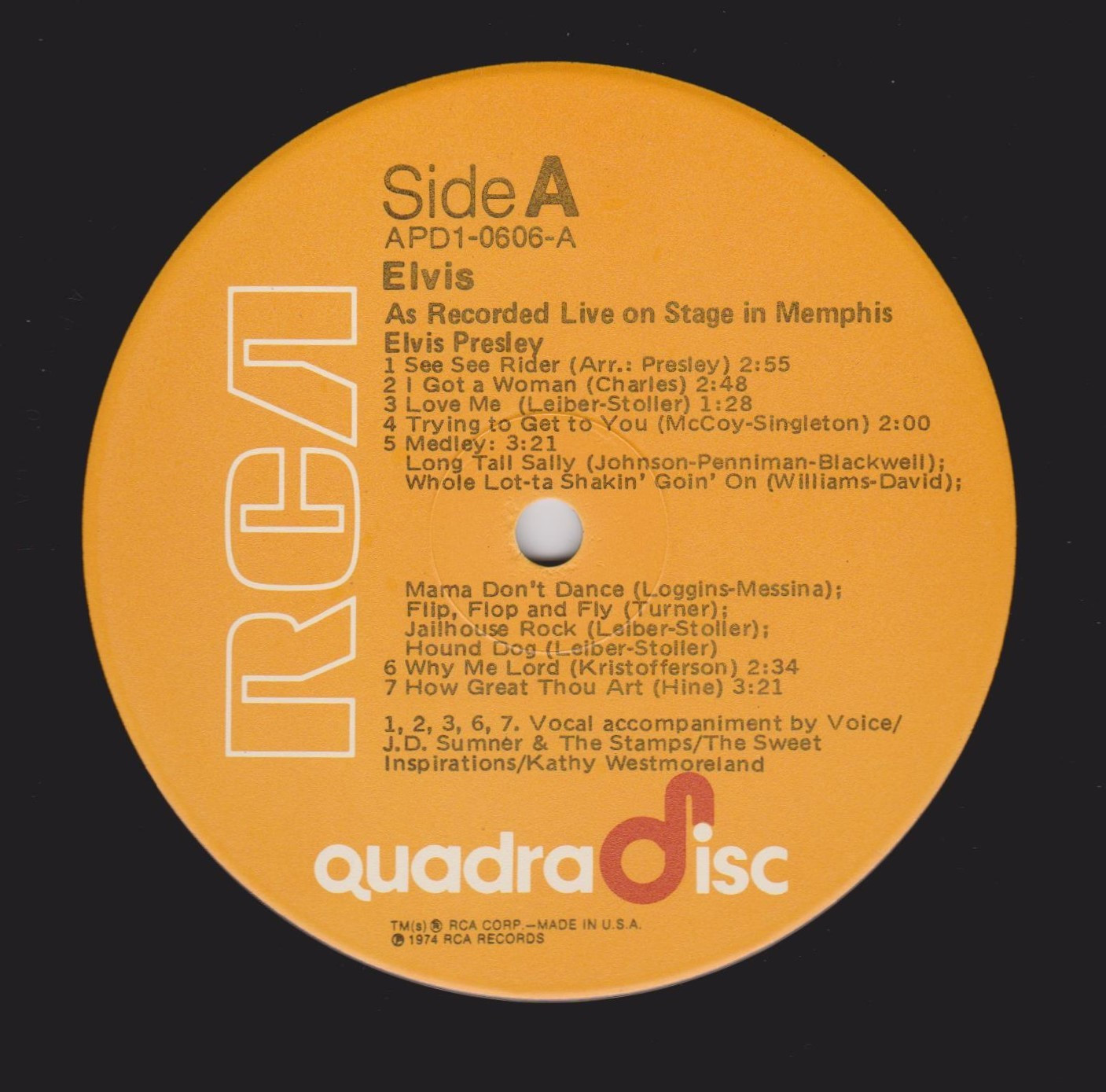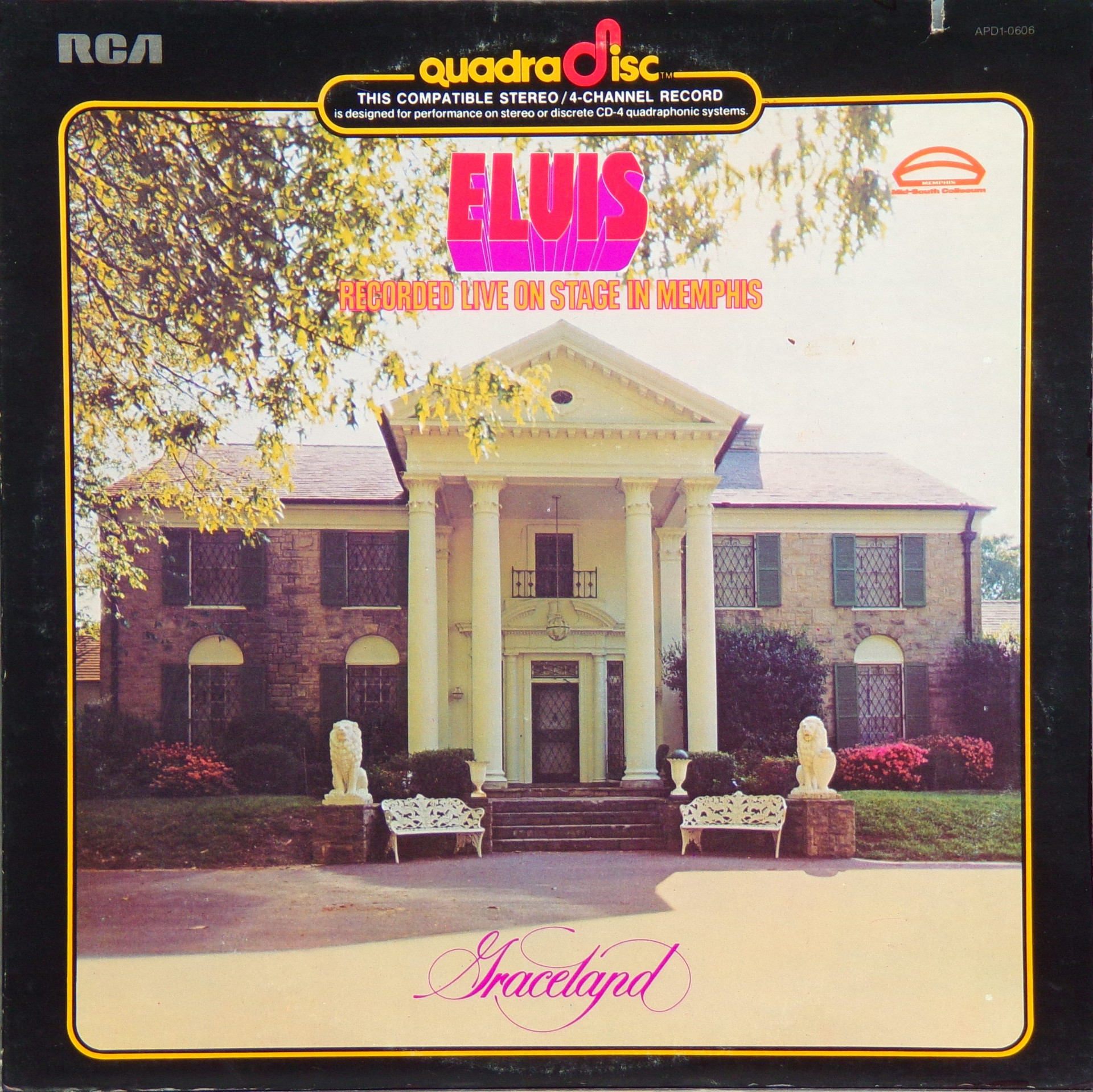Album Title : Recorded Live On Stage In Memphis
Catalogue Number : APD1 - 0606
Year Release : 1974
Side 1 : See See Rider - I Got A Woman - Love Me - Tryin' To Get To You - MEDLEY: Long Tall Sally; Whole Lotta Shakin' Goin' On; Your Mama Don't Dance; Flip Flop and Fly; Jailhouse Rock; Hound Dog - Why Me Lord - How Great Thou Art
Side 2 : Blueberry Hill - I Can't Stop Loving You - Help Me - American Trilogy - Let Me Be There - My Baby Left Me - Lawdy Miss Clawdy - Can't Help Falling In Love - Closing Vamp
Brief History :
CD-4 (Compatible Discrete 4) / Quadradisc
Compatible Discrete 4 (CD-4) or Quadradisc (not to be confused with compact disc) was introduced in May 1972 as a discrete quadraphonic system created by JVC and RCA. Record companies who adopted this format include Arista, Atlantic, Capricorn, Elektra, Fantasy, JVC, Nonesuch, A & M, Reprise and Warner.
This was the only fully discrete quadraphonic phonograph record system to gain major industry acceptance.
In the CD-4 system, the quadraphonic audio was divided into left and right channels, which were recorded orthogonally in the vertical plane of the disc groove, which is the case with normal stereo. The audio frequencies (20 Hz to 15 kHz), often referred to as the sum channel, would contain the sum of the left front plus left back signals in the left channel and the sum of the right front plus the right back signals in the right channel. In other words, when observing the audio frequencies only, the record appeared to have an ordinary stereo recording. Along with this audio, a separate 30 kHz carrier was recorded on each groove wall. The carrier on each side carried the difference signal for that side. This was the information that enabled a combined signal to be resolved into two separate signals. For the left carrier it would be left front minus left back, and for the right carrier it would be the right front minus the right back. These audio signals were modulated onto the carriers using a special FM-PM-SSBFM (frequency modulation-phase modulation-single sideband frequency modulation) technique. This created an extended carrier frequency range from 18 kHz to 45 kHz for the left and right channels. The algebraic addition and subtraction of the sum and difference signals would then yield compatible and discrete quadraphonic playback. CD-4 was responsible for major improvements in phonograph technology including better compliance, lower distortion levels, pick-up cartridges with a significantly higher frequency range, and new record compounds such as Q-540, which were highly anti-static. A typical CD-4 system would have a turntable with a CD-4 cartridge, a CD-4 demodulator, a discrete four-channel amplifier, and (ideally) four full-range loudspeakers. Some manufactures built the CD-4 demodulator into complete four-channel receivers.
Simply put, CD-4 consists of four recorded signals (LF, LB, RB, RF) and the following coding matrix, similar to FM broadcast stereo multiplexing.
The CD-4 encoding/decoding matrix:
(LF+LB)+(LF-LB)=2LF or left front
(LF+LB)-(LF-LB)=2LB or left back
(RF+RB)+(RF-RB)=2RF or right front
(RF+RB)-(RF-RB)=2RB or right back
There was also a similar FM radio system called Quadracast. But CD-4 (and quadraphonic audio in general) failed due to late FCC approval of FM quadraphonic broadcasting, the improvements CD-4 engendered spilled over into, and substantially improved, the production of conventional stereo LP records.
The CD-4 record track is broader than a conventional stereo track, so maximum the playing time is lower than a conventional stereo record.
Quadradiscs/CD-4 records were seldom called quadraphonic. When a record was called quadraphonic it was almost always an SQ-encoded or an other matrixed record. But when a record was called quadradisc it was always a CD-4 record.
Details :
Front Cover : Photo of Graceland. Title top centre. Catalogue number top right.
Rear Cover : The gates into Graceland. Catalogue number bottom left. Printed in U.S.A. bottom.
Label : Orange. Quadradisc vinyl.
Side A : Title at top & Quadradisc at bottom.
Side B : Title at top & Quadradisc at bottom.
Pressing Plant : Indianapolis
Matrix Number Side 1 : APD1 - 0606 A - 1 Q A1 (Machine Stamped)
Matrix Number Side 2 : APD1 - 0606 B - 3 Q A1 (Machine Stamped)
*NOTE*



